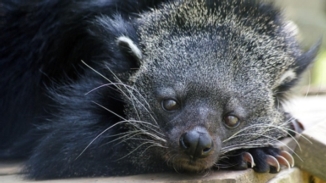
加固海狸水坝帮助恢复鱼类数量
Beaver Dams Strengthened by Humans Help Fish Rebound
加固海狸水坝帮助恢复鱼类数量
Fish flourished in creeks in which human engineers helped shore up beaver dams made weak by poor timber availability.
那些缺乏木料支撑的海狸水坝摇摇欲坠,工程师加固这些水坝,鱼群得以在这些水坝间繁衍生息。
撰文/播音 Jason G. Goldman
翻译 郭丰茹
审校 吴非
In the early 19th century the fur industry reached what was then known as the Oregon Territories. Lewis and Clark found massive numbers of Pacific salmon and steelhead trout there, swimming among the beaver dams scattered across the Columbia River Basin.
在19世纪初,毛皮工业进入当时的俄勒冈地区。(在西部探险的)莱维斯(Lewis)和克拉克(Clark)发现了大量的太平洋鲑鱼和虹鳟,在散布于哥伦比亚河流域的海狸水坝中穿梭。
But in an effort to starve American interests, Canada’s Hudson's Bay Company tried to create a "fur desert" by killing off as many fur-bearing animals as they could. As a result, beavers had all but disappeared from the area by the year 1900. And once the beavers and their dams were gone, fish populations dropped.
但是为了制约美国的利益,加拿大哈得孙湾公司(Hudson's Bay Company)试图造成“毛皮沙漠”,尽可能多地将皮毛动物置于死地。因此,1900年之后,该区域的海狸几乎消失殆尽。随着海狸和海狸水坝被扑杀破坏,鱼类的数量急剧下滑。
Today, steelhead trout numbers in the region continue to fall. But scientists and government agencies are working to restore their habitats.
如今,虹鳟的数量在该地区持续下跌。但是科学家和政府机构正在努力恢复它们的栖息地。
"We're looking for restoration approaches in these areas to recover ESA-listed species, but we really don't know what works and what doesn't." Nick Bouwes of the environmental consulting firm Eco Logical Research and Utah State University.
“我们正在试图找到恢复这些地区的濒危(ESA-listed)物种——海狸数量的方法,但我们真的不知道该怎么办。”环境咨询公司Eco Logical Research和犹他州立大学的Nick Bouwes说。
He says that the U.S. spends a billion dollars each year to restore watersheds, but without any real empirical information to guide those efforts. So Bouwes and his team tested the idea that by helping beavers, they could help the fish.
他说,美国每年花费十亿美元来恢复该流域的生态,但没有任何实际经验来指导这些工程。所以Bouwes团队尝试通过恢复海狸数量来帮助恢复鱼类的数量。
Dams naturally alter the flow of streams, providing fish with a variety of suitable habitats. But the watersheds have become so degraded that there's not enough woody vegetation available for the beavers to build strong dams. The flimsy ones they do build get washed away whenever there's a big storm.
水坝自然而然地改变河流的流量,为鱼群提供多种适宜的栖息地。但水域被严重破坏,这使海狸没有足够的木本植物来建造坚固的水坝。这些脆弱的水坝只要一有大风暴就会被冲垮。
"The idea was, can we reinforce these dams so that they maintain their integrity during high flows, and can be maintained by beavers to capture that sediment, to reconnect that floodplain?"
“当时我们的想法是,能不能加固这些水坝,使这些水坝在激流中完整地保存下来,海狸用水中的沉积物就可以去填补缺口呢?”
For seven years, the researchers compared Bridge Creek, which had lots of artificially strengthened dams, to Murderer's Creek, which had none. And in Bridge Creek, the fish flourished—despite the view held by some that beaver dams are bad for fish. The results are in the journal Scientific Reports. [Nicolaas Bouwes et al, Ecosystem experiment reveals benefits of natural and simulated beaver dams to a threatened population of steelhead (Oncorhynchus mykiss)]
研究者对比了建有大量人造水坝的Bridge Creek以及没有人造水坝的Murderer's Creek在七年间的情况。尽管一些人认为海狸水坝对鱼类有害,但在Bridge Creek,鱼大量繁殖起来。这项成果刊登在《科学》杂志上。
"Beavers, they’re really good at making a mess of a system, and it's that messiness that's exactly what we're looking for, by creating more complex fish habitat."
“海狸能扰乱生态系统,但这种干扰正是我们需要的,这样能够构建出更多的鱼类栖息地。”
And costing just $11,000 for each kilometer of stream, artificial dam reinforcements are much cheaper than conventional restoration methods—since the beavers do most of the work for us. And that is a dam good deal.
每千米河流只需花费11 000美元,人工加固海狸水坝和传统的修复方法比起来更便宜——因为海狸替我们做了大部分工作。这是一件很划算的事情。
未经书面许可任何人不得复制或镜像
京ICP备11000850号-1
 京公网安备11010502039775号
京公网安备11010502039775号 信息网络传播视听节目许可证0111611号
国家科技基础条件平台

















